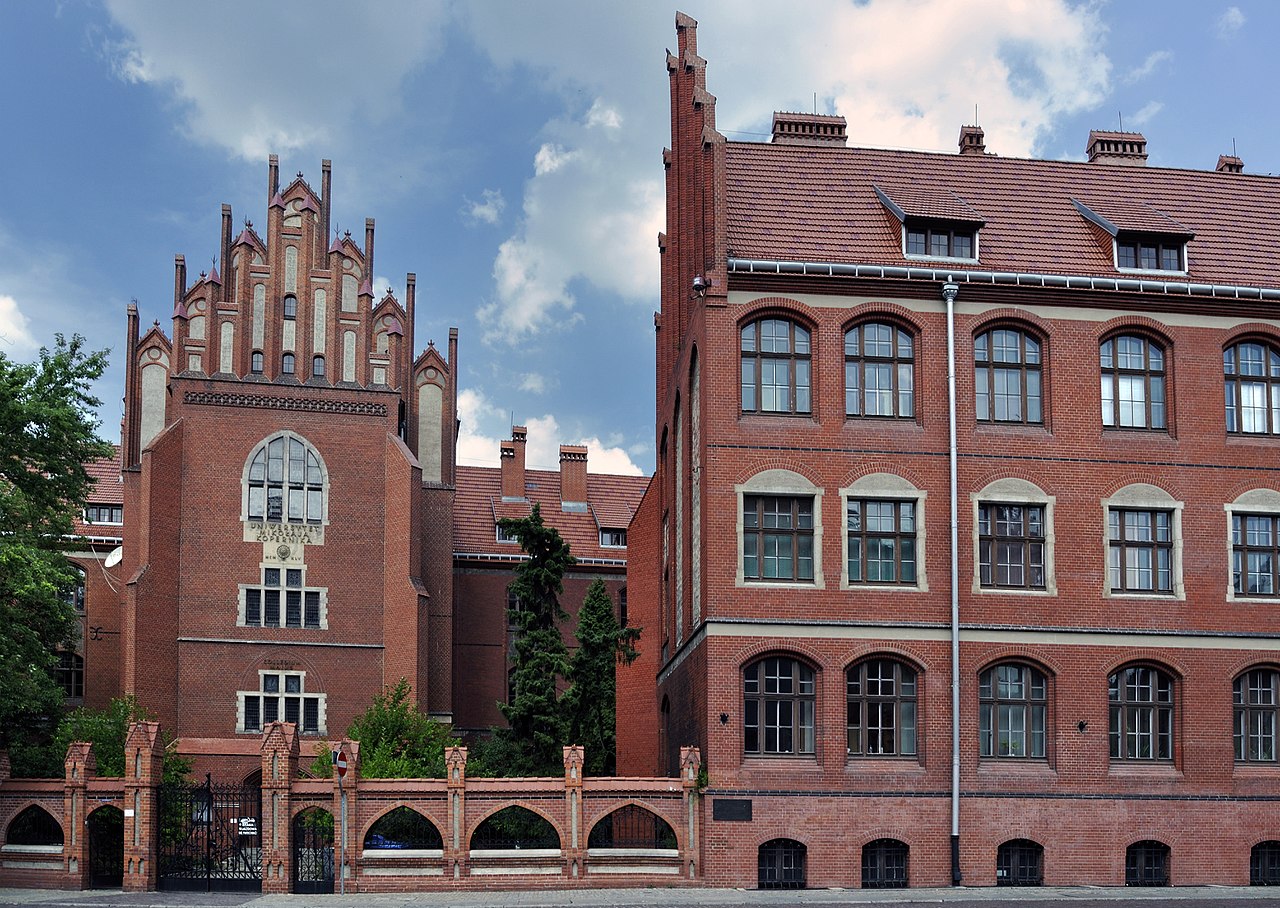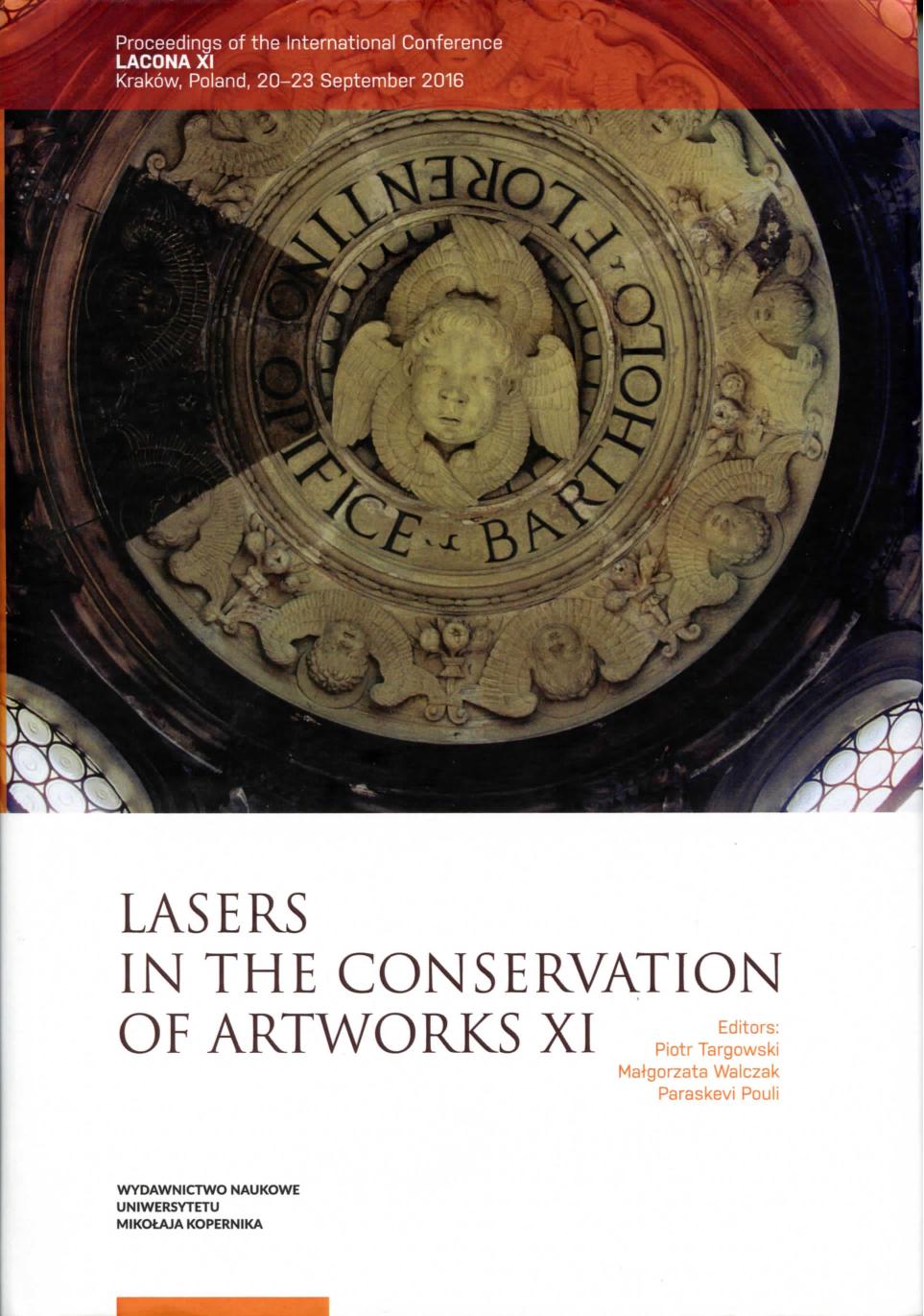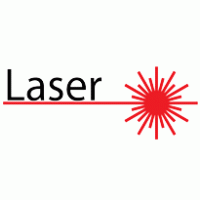20-23 September 2016
LaCONA XIKrakow, Poland
Conference: Lasers in the Conservation of Artworks

Date
20-23 September 2016
Organizer
Nicolaus Copernicus University of Torun, The Interacademic Institute of Conservation and Restoration of Art, Warszawa and Krakow and The National Museum in Krakow
Chair person
Piotr Targowski
Website
Book of Proceedings
LACONA XI : Lasers in the Conservation of Artworks
Editorial Committee
Piotr Targowski
Nicolaus Copernicus University in Torun, Poland
Malgorzata Walczak
The Jan Matejko Academy of Fine Arts in Krakow, Poland
Paraskevi Pouli
Institute Of Electronic Structure & Laser, Foundation for Research and Technology – Hellas (FORTH), Heraklion, Crete, Greece

LACONA XI : Lasers in the Conservation of Artworks:
Krakow, Poland
Editor: Piotr Targowski, Malgorzata Walczak, Paraskevi Pouli Wien, Nicolaus Copernicus University Press, Torun 2017
ISBN 978-83-231-3875-4
Foreword
The eleventh conference on Lasers in the Conservation of Artworks has been the latest of the LACONA conference series, initiated more than 20 years ago – in 1995 – by Costas Fotakis and held in FORTH in Heraklion, Greece. It was followed by the LACONA II meeting in Liverpool, UK in 1997, LACONA III in Florence, Italy in 1999, LACONA IV in Paris, France in 2001, and then Osnabruck, Germany in 2003. The LACONA conference was held in Vienna, Austria in 2005, followed by Madrid, Spain in 2007, Sibiu, Romania in 2009 and London, UK in 2011.
The most recent LACONA X conference was planned in 2013 in Egypt; however, due to political disturbances it was transferred to Sharjah, UAE and held in 2014. The present edition was held in Krakow, Poland, hosted by the Jan Matejko Academy of Fine Arts. It was co-organized by Nicolaus Copernicus University in Tormi, The Interacademic Institute of Conservation and Restoration of Art in Warszawa and Krakow, and, last but not least, by the National Museum in Krakow.
The early editions of LACONA were devoted mostly to the application of lasers to cleaning of artworks, which, at the time, was an emerging topic. Today, we prefer to talk about “removal of unwanted layers and coatings” to emphasize that this application now goes far beyond simple “cleaning” and has become — for many classes of objects —a mature procedure, widely accepted within the conservation/restoration community. Nevertheless, its effective and safe application to specific objects remains a subject of extensive study. Also, continual progress in the development of lasers, especially by utilizing the ultra-short pulses provided by compact and less expensive sources, opens new areas of application by placing a broader set of tools in the hands of the conservator/ restorer.
Another significant feature of recent LACONA conferences is the much broader range of subjects presented, since the application of lasers in the conservation of artworks covers much more than simply “laser cleaning”. Appropriate restoration procedures are always preceded by examination and laser techniques — or, more broadly speaking, techniques utilizing coherent light — such as LIBS, Raman spectroscopy, optical coherence tomography and nonlinear or two-photon laser microscopy, feature regularly as significant subjects at LACONA,
A specific aim for the LACONA series has always been to bring together conservation scientists active in the field of developing methods and instruments with practizing restorers and conservators who are the most important recipients of these new developments. Without the professional knowledge and experience of the latter it would not be possible to implement any of the results obtained in laboratory research in conservation practice. Therefore, LACONA has always been a unique forum for the exchange of ideas between scientists and practitioners. All these areas of interests are reflected in this year’s conference programme, where the two largest sessions are devoted to fundamental research on the removal of unwanted substances with the aid of lasers and to case studies, in which reports of the use of lasers in restoration studios were presented. These two groups of contributions were complemented by coherent light-based methods for imaging, documentation and examination of objects and structures as well as laser-based spectroscopic techniques for the analysis of culturally-significant objects and the monitoring of restoration treatments.
During this, the latest, LACONA conference, 45 oral communications and 14 posters were presented. For the first time the LACONA conference was preceded by a one-day workshop for about 50 participants, dedicated to laser cleaning techniques for various cultural heritage objects. During hands-on sessions, the participants had an opportunity to work with four different specialized lasers to gain experience and a better understanding of the use of lasers in conservation. This session could not have been possible without a kind support from Dr. Alessandro Zanini from El.En., Ms. Malgorzata Musiela from Restauro Sp. z o.o. and Mr. Bartosz Dajnowski from GC Laser Systems Inc.
This volume comprises 20 peer-review research articles submitted by participants after the conference. They are organised in three chapters covering laser ablation, coherent light-related analytical techniques and case studies. Additionally, the first chapter contains two key-note articles, describing lesser-known aspects of the history of use of light and lasers in the context of preservation of cultural heritage.
Finally, as a chief editor I would like to express my gratitude to the co-editors of this volume, all referees, the Permanent Scientific Committee of LACONA Conferences and, last but not least, to the Local Organizing Committee. Very special thanks go to His Magnificence, the Rector of the Jan Matejko Academy of Fine Arts in Krakow, Professor Stanislaw Tabisz, and the Deans of the Department of Restoration and Conservation of Artworks. Without their enthusiastic support this event would not have been possible.
Piotr Targowski,
Krakow, Torun, September, 2016
Get In Touch
1234 sAn Francisco, CA 12345
+1 555 0394 848
info@diviconsulting.com
